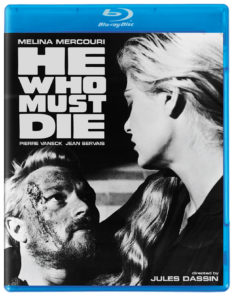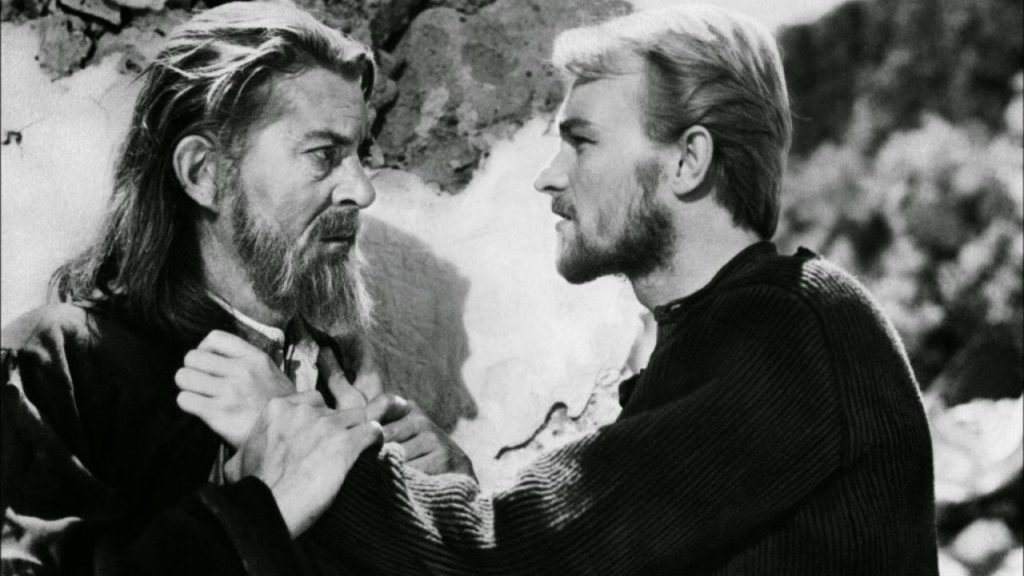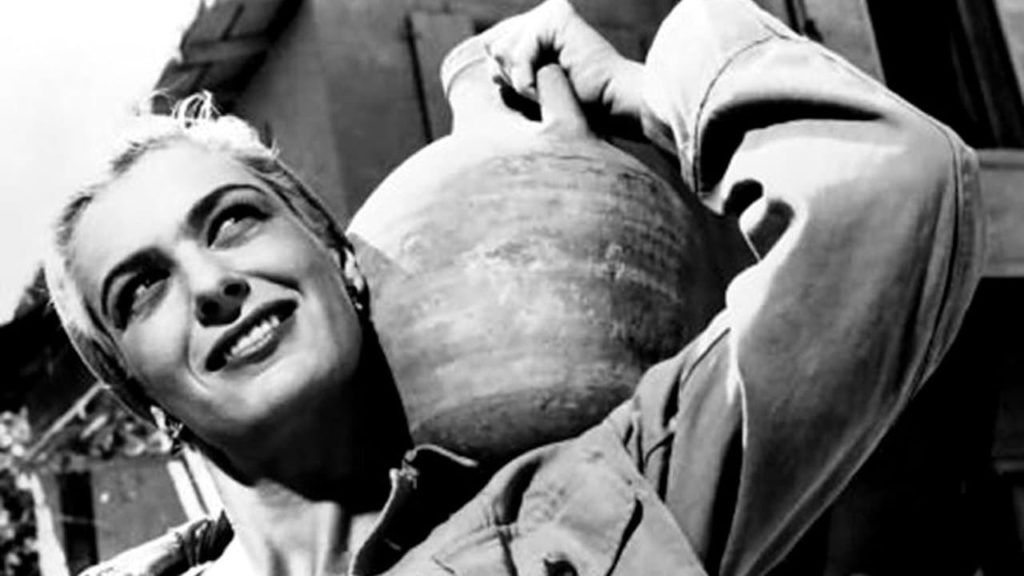Christ Stopped at Crete
DIRECTED BY JULES DASSIN/FRENCH/1957
BLU-RAY STREET DATE: SEPTEMBER 6, 2022/KL STUDIO CLASSICS

The trailer (likely part of an old rerelease promotion) included on the KL Studio Classics’ Blu-ray for 1957’s unusual French social and political drama He Who Must Die (Celui qui doit mourir) states (and I paraphrase) that “out of the 300+ films commercially released in any given year; masterful works are overlooked. This is one such film”.
It’s not an incorrect sentiment, particularly in its applicability to this film. Not only did this complex commentary on Greece under Turkish rule and Passion Play allegory from director Jules Dassin fall between the cracks upon its original release, but it’s also been genuinely scarce ever since. Until now. Thanks to Kino Lorber, the exquisitely monochromatic He Who Must Die has finally made its home video debut- and on a beautiful Blu-ray, no less.
Based on the novel Christ Recrucified (also published as The Greek Passion) by Nikos Kazantzakis (Zorba the Greek, The Last Temptation of Christ), He Who Must Die treads uncommon ground in its examination of who is Christ-like, and who is not. While this question is never outwardly voiced, it remains a conscious through-line for this 122-minute big swing of a film. The film’s large ensemble cast features Melina Mercouri, Jean Servais (star of Dassin’s previous film, the great Rififi), Pierre Vaneck (Brabantio in 1995’s Othello), Gert Fröbe (Goldfinger in Goldfinger), and Maurice Ronet (the guy in the elevator in Elevator to the Gallows).
The story concerns a small, Christian, Turkish-occupied Greek village in 1921 during what would prove to be the twilight of the Greco-Turkish War. The culturally vital local casting of an every-seven-years Passion Play collides with intensifying disputes over whether or not to assist Greek refugees far more impacted by the conflict. Playing nice with their Muslim overlords have gotten our central village this far with minimal bloodshed. Dare they upset that apple cart?

Meanwhile, the play’s cast proves colorful in its own right, setting initial murmurs ablaze. While the iconic roles of the crucifixion story are filled by seemingly obvious surrogates, Kazantzakis’ narrative has its own way with any expectations. The dashing stammering upright shepherd cast to play Jesus (Vaneck) is not without baggage. Similarly, the flirty widow-prostitute set to portray Mary Magdalene (Mercouri) reveals herself to have a true heart of gold. It goes on and goes deeper, as the film’s French-speaking character ensemble demonstrates rich, often conflicting nuances as the sociological and spiritual tale plays out.
Dassin, in maintaining a tight compositional control over his CinemaScope frame, renders this effort ever approachable amid its thematic complexities. It is little wonder that he reportedly named it his own favorite of his otherwise Film Noir/heist-driven filmography. He Who Must Die is, on top of everything else affecting Dassin’s life at the time, quite the bold career move. In scope, setting, and specific themes, it resembles nothing he’s previously helmed. Yet, from a squint-worthy distance, one can discern the kind of worldly alienation so central in his Noir work, as well as the overwhelming systemic mechanics of his trailblazing heist pictures.
Here is where it’s obvious that the banished knows banishment. Since 1950 or thereabouts, director Jules Dassin had been blacklisted from Hollywood. For Dassin, perhaps the HUAC-driven rejection turned out to be a blessing in disguise. His career flourished in France to a far greater magnitude than it ever likely would’ve stateside, and it was in this time he met his eventual bride, actress Melina Mercouri, whom he remained married to until her death from lung cancer in 1994. He Who Must Die marks their first professional collaboration, still almost a decade out from their 1964 nuptials. He photographs her from the vantage point of a man stricken, that much is obvious upon first viewing of this enthrallingly complex film.

The disc includes a new, appropriately dense audio commentary by film historian/filmmaker Daniel Kremer. Nothing if not thorough, thorough, thorough, Kremer does a truly impressive job of presenting and moving through the complex histories of Dassin, Kazantzakis, and the film itself. It’s the kind of track that invites academic-style note-taking and active, deliberate listening, but also isn’t afraid to go a bit personal. On his track, Kremer shares why He Who Must Die holds particular significance to him. Not every commentarian proves to be a proper fit with the movies they go on record chatting up, but in this time, it’s a perfect match. Not that more is needed (though it would be justified), but there are no other pertinent disc extras besides the aforementioned theatrical trailer.
Despite its mulligans stew of nationalities in its own mix (an expat American director adapting a Greek author’s novel in the French language and featuring actors from all corners of the globe), He Who Must Die should’ve been right at home on art house screens in 1957. It’s the kind of intelligent and challenging foreign offering that audiences were really warming up to via the expanding cinematic works of Ingmar Bergman, Federico Fellini, and Akira Kurosawa (among others). Visually, it falls right in line with the high end 1950s work of such filmmakers. Instead, it withered on the vine. Which is a real shame, insofar as not only is the film outstanding, but its ideas spoke to its time in a particularly potent manner. The world today, in that way, isn’t much different. The good news is that this sparkling Blu-ray edition makes it possible for everyone to drink its wine.

